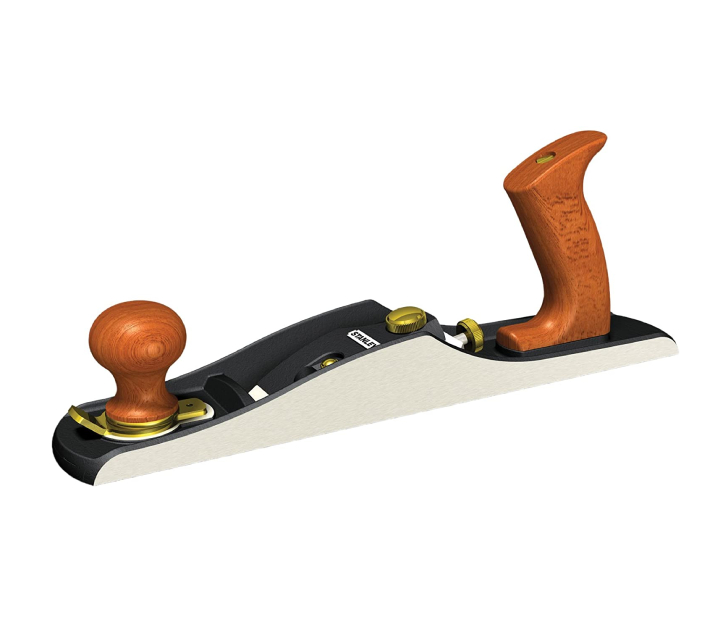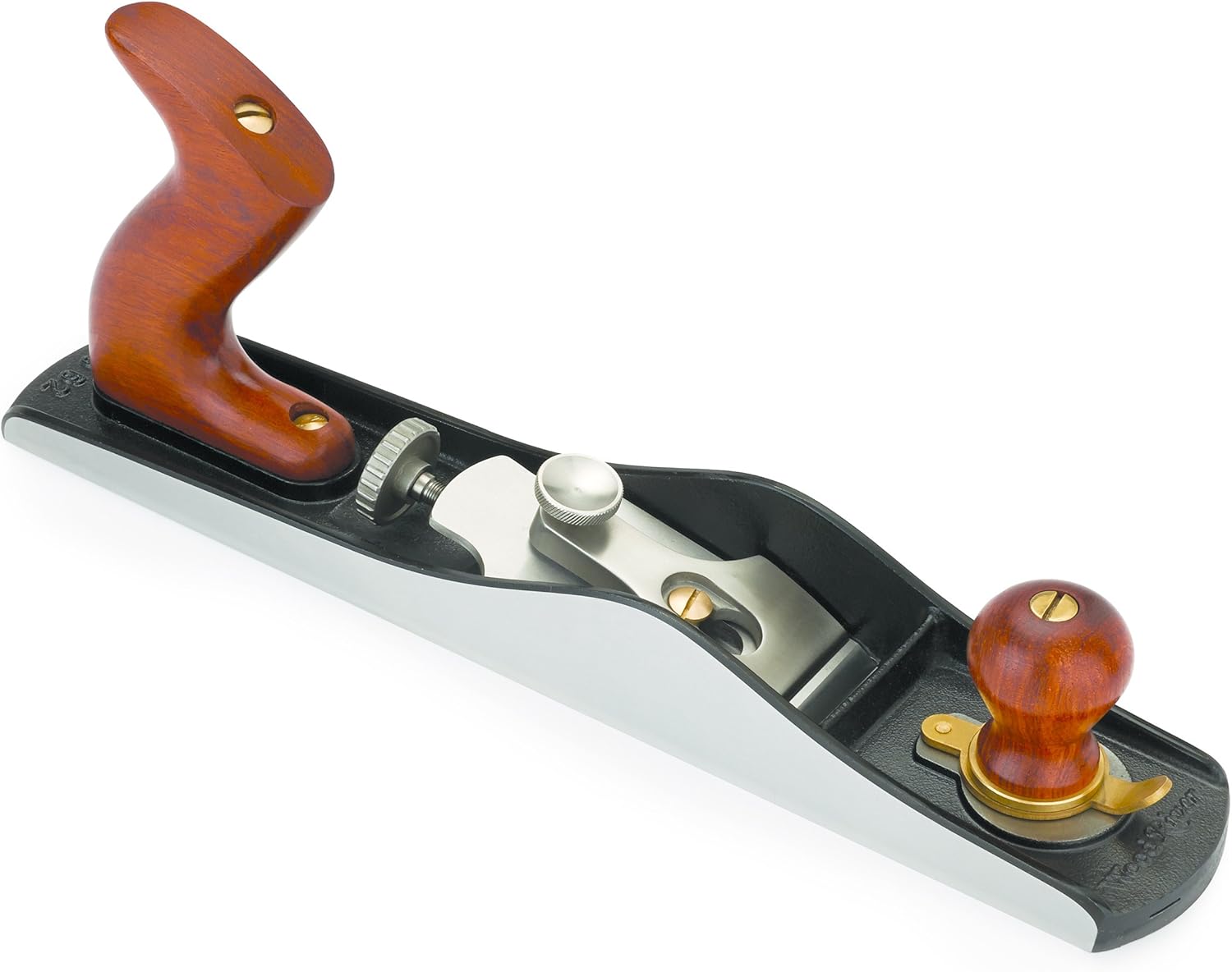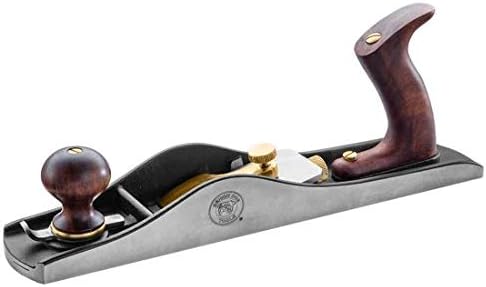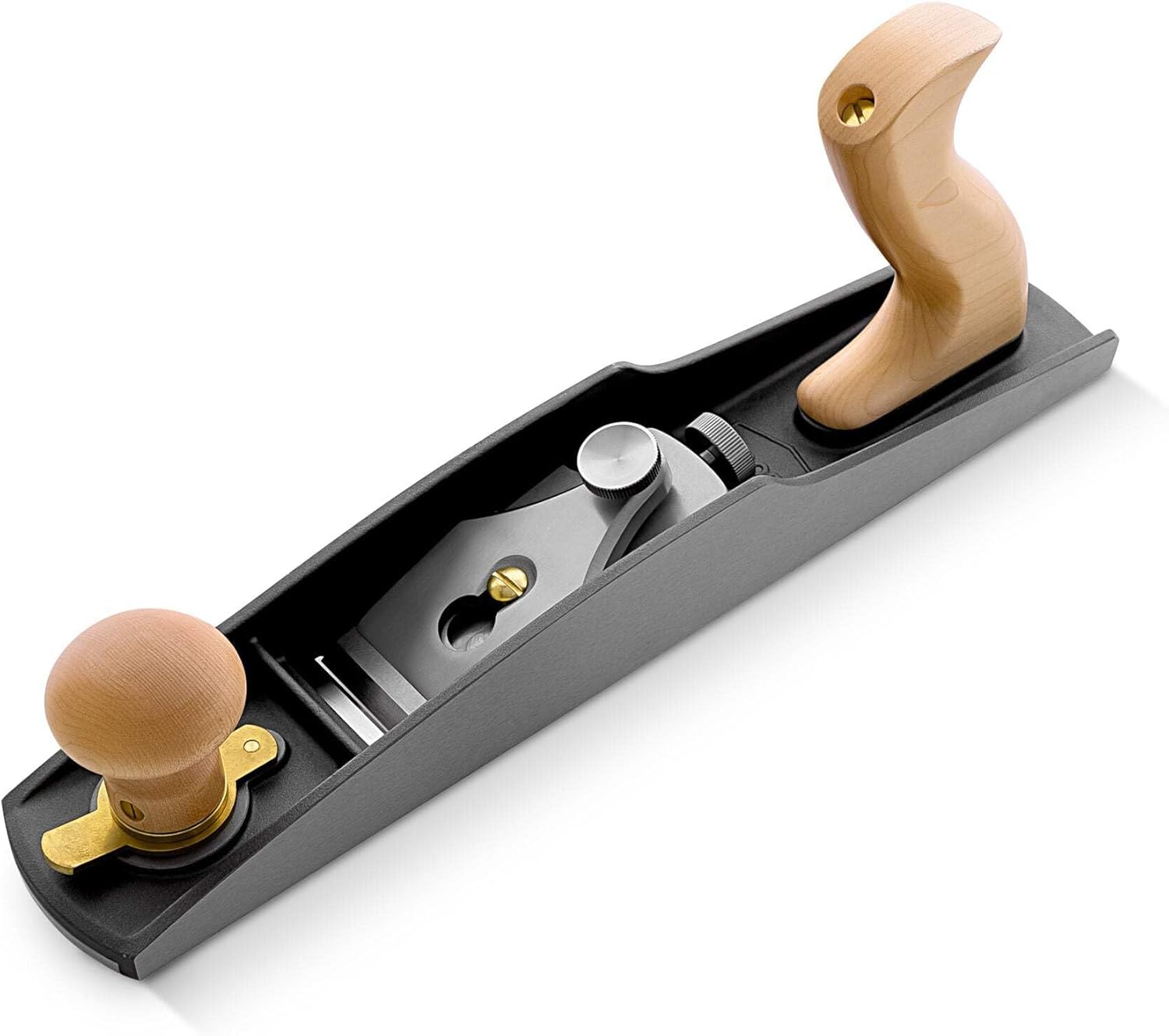Low Angle Jack Planes: What Sets The Premium Models Apart in 2026

Here's something that stops most woodworkers in their tracks: watching someone effortlessly plane highly figured maple without a single tearout. No fighting the grain, no chatter, just smooth, controlled passes that leave a surface ready for finish. Combined with the right plane for doors, these tools transform woodworking precision. The secret? They're using a low angle jack plane - but not just any low angle jack plane.
The market for these tools has evolved dramatically since the traditional Stanley 62 first appeared. Today's premium models incorporate aerospace-grade materials, precision-ground soles measured in thousandths of an inch, and blade steels that stay sharp through projects that would have dulled their predecessors three times over. The price range tells its own story: from $150 entry-level models to $400+ precision instruments that tool collectors guard jealously.
Understanding The Low Angle Advantage
A standard jack plane positions its blade at 45 degrees. Drop that angle to 12-15 degrees, and the physics change completely. The lower angle creates what woodworkers call a slicing cut rather than a scraping action - imagine the difference between pushing a chisel straight into wood versus drawing a knife across it at an angle.
This geometry particularly shines when dealing with end grain, those notoriously difficult highly figured woods, or when shooting miters that need to be perfect to within a few thousandths. The reduced cutting angle means less resistance, which translates directly into less effort for the user and cleaner cuts through challenging grain patterns.
The numbers reveal why professionals reach for these tools: a standard plane at 45 degrees with a 25-degree bevel creates a 70-degree cutting angle. A low angle plane with the same bevel achieves just 37 degrees - nearly half the angle, dramatically reducing the force needed to slice through difficult woods.
Current Market Leaders: Four Distinct Approaches
Stanley 1-12-137 62-Low Angle Sweetheart Jack Plane

• A2 steel blade at 3/16" thickness • Cherry wood handle and knob • 14" sole length, 5.9 lbs weight • Norris-style adjustment mechanism • Adjustable throat plate for versatility
Stanley's Sweetheart line represents their premium offering, and the numbers back it up. The A2 steel they've chosen holds an edge 2-3 times longer than standard O1 steel, though it takes about 20% longer to sharpen. That cherry wood isn't just aesthetic - wood handles absorb vibration 40% better than metal alternatives, reducing hand fatigue during extended use.
The Norris-style adjuster deserves attention. Unlike simpler mechanisms that only control depth, this system allows lateral adjustment without removing the blade - saving the 3-5 minutes of setup time that older designs required for each adjustment. Professional furniture makers report this single feature saves them 20-30 minutes per project.
WoodRiver #62 Low Angle Jack Plane

• Ductile iron body construction • High-carbon steel blade • 14" x 2.44" sole dimensions, 5.07 lbs • Bubinga tote and front knob • 12-degree bed angle
WoodRiver, Woodcraft's house brand, takes a different approach. Their ductile iron casting weighs in slightly lighter than the Stanley but maintains the mass needed for momentum through cuts. Ductile iron offers 20% better vibration dampening than standard cast iron while maintaining the stability that woodworkers expect.
The bubinga wood choice reflects current preferences in the custom plane market. This African hardwood rates 2,200 on the Janka hardness scale - significantly harder than cherry (995) or walnut (1,010) - meaning these handles will show minimal wear even after decades of use. Woodcraft's integration with their retail network means replacement parts remain readily available, a consideration for tools expected to last generations.
Bench Dog Tools No. 62 Low Angle Jack Plane

• 2" wide, 3/16" thick carbon steel blade • Sole flatness tolerance: 0.002" to 0.004" • 13-3/4" sole length, 4.85 lbs • Sapele tote and knob • Individual inspection certificate included
Bench Dog enters the precision tool market with documentation that matters. Each plane ships with actual measurements of that specific tool's sole flatness - not generic specifications but the actual numbers from your plane. In machining terms, their 0.002" to 0.004" tolerance equals the precision of surface grinding operations typically reserved for machine tool construction.
The certificate of inspection includes blade hardness readings. Most manufacturers claim RC 58-62; Bench Dog proves it with individual testing. This transparency reflects a broader trend in premium tools where buyers expect verification of claimed specifications.
Melbourne Tool Company Low-Angle Jack Hand Plane

• M2 High Speed Steel (HSS) blade • 5.85 pounds, 17" length • Minimalist design for easy maintenance • Combined depth and lateral adjustment wheel • Thicker blade design for reduced vibration
Melbourne Tool Company's entry changes the conversation entirely. M2 HSS represents metallurgy borrowed from industrial cutting tools - this steel maintains its edge at temperatures that would destroy traditional tool steels. In practical terms, woodworkers report 3-5 times the edge life compared to O1 steel, though initial sharpening takes proportionally longer.
The minimalist design philosophy shows in the adjustment mechanism. Rather than separate wheels for depth and lateral movement, MTC combines both functions into a single control - twist for depth, slide for lateral adjustment. This reduces the part count by 30% compared to traditional designs, meaning fewer points of potential failure or wear.
Their blade thickness exceeds industry standards, addressing a problem that plagued earlier designs: blade chatter. Thicker blades resist vibration, particularly important when working figured woods where any vibration translates directly into surface tearout.
Material Science: The Steel Story
The evolution from O1 to A2 to M2 steel tells the story of modern metallurgy applied to hand tools. O1 steel, the traditional choice, sharpens easily but requires frequent honing - sometimes every 20-30 minutes in abrasive tropical hardwoods. A2 steel doubled that interval but proved harder to sharpen, requiring diamond stones for best results.
M2 HSS pushes the envelope further. Originally developed for industrial lathe tooling that cuts metal, M2 maintains its hardness at temperatures up to 1,000°F. For woodworking, this translates to edge retention that professionals measure in days rather than hours. The trade-off appears in sharpening time - M2 takes roughly three times longer to establish an initial edge compared to O1.
Blade thickness matters more than most users realize. Standard planes use blades around 1/8" thick. The 3/16" blades in premium models represent a 50% increase in mass, directly reducing vibration amplitude. Physics dictates that doubling blade mass quarters vibration intensity - the difference between a surface ready for finish and one requiring additional sanding.
Sole Flatness: Measuring In Thousandths
Sole flatness separates workshop tools from precision instruments. A deviation of 0.010" might seem insignificant, but it translates to inconsistent cuts and frustrated users. Premium manufacturers now specify tolerances previously reserved for machine tools.
Consider the numbers: a human hair measures approximately 0.003" in diameter. When Bench Dog specifies 0.002" to 0.004" tolerance, they're guaranteeing flatness to within the thickness of a hair. This precision comes from surface grinding operations that remove material in passes of 0.0001" - ten-thousandths of an inch.
The practical impact shows in edge jointing. A board 8 feet long magnifies any sole irregularity forty-fold. That 0.004" deviation becomes nearly 1/8" over the board's length - the difference between joints that close perfectly and gaps that require filling.
Adjustment Mechanisms: Evolution Through Engineering
The Norris adjuster, standard on many premium planes, replaced the Bailey adjustment mechanism that dominated for a century. The Bailey system works but requires blade removal for lateral adjustment. The Norris design allows both depth and lateral control with the blade installed - saving setup time and maintaining settings between adjustments.
Melbourne Tool Company's combined adjuster represents the next evolution. By integrating both functions into a single control, they've eliminated the confusion new users face with multiple adjustment points. Professional woodworkers report this design reduces setup time by 40% compared to traditional mechanisms.
Some manufacturers retain the Bailey design, arguing its simplicity means fewer failure points. The debate mirrors broader discussions in tool design: complexity versus reliability, innovation versus proven function.
Handle Materials: Beyond Aesthetics
Wood choice for handles involves more than appearance. Cherry, bubinga, and sapele each bring specific properties that affect tool performance. Cherry's moderate hardness (995 Janka) provides good shock absorption while developing a distinctive patina through use. Bubinga's extreme hardness (2,200 Janka) resists wear but transmits more vibration to the user's hands.
Sapele splits the difference at 1,410 Janka, offering durability with reasonable comfort. The wood's interlocked grain resists splitting - critical given the stress concentration where handles meet metal bodies.
Modern manufacturers increasingly seal handles with oil-based finishes rather than lacquer. Oil penetrates the wood, maintaining flexibility while providing moisture resistance. Lacquer creates a surface film that eventually cracks and peels, requiring refinishing.
Weight Distribution And Balance
The 4.85 to 5.9-pound range of these planes reflects careful balance calculations. Too light, and the plane requires excessive downward pressure, fatiguing users quickly. Too heavy, and control suffers, particularly on vertical surfaces or overhead work.
Center of gravity positioning proves equally critical. Premium planes position their balance point 40-45% back from the toe, aligning with the user's natural hand position. This eliminates the tendency to dive or climb during use - a characteristic that separates precision tools from hardware store alternatives.
The longer sole of the Melbourne model at 17 inches changes the dynamics entirely. Longer soles bridge low spots in lumber more effectively but require more skill to maneuver. The physics are simple: a longer reference surface produces flatter results, assuming the user maintains consistent pressure.
Market Positioning And Pricing
The $150 to $400 price spread reflects distinct manufacturing philosophies. Stanley's Sweetheart line leverages high-volume production with selective hand-fitting of critical components. WoodRiver employs Woodcraft's integrated supply chain to reduce costs while maintaining quality. Bench Dog's individual inspection and documentation justify premium pricing through verified precision.
Melbourne Tool Company's M2 steel and minimalist design target professionals who value edge retention over initial cost. Their pricing reflects the reality that M2 steel costs roughly triple that of O1, with corresponding increases in machining complexity.
Used market dynamics reveal long-term value. Premium planes from recognized manufacturers retain 60-80% of retail value after a decade, assuming reasonable maintenance. Lesser-known brands typically drop to 30-40% of original cost in the same period.
The Throat Adjustment Factor
Adjustable throats distinguish versatile planes from single-purpose tools. A tight throat - perhaps 0.010" - prevents tearout in figured woods by limiting chip thickness. Open the throat to 0.050" or more, and the plane removes material rapidly for initial stock preparation.
The mechanism matters. Simple sliding plates work but loosen over time. Lever-actuated systems maintain settings better but add complexity and potential failure points. The Stanley and WoodRiver models use proven sliding designs refined over decades. Melbourne's approach integrates throat adjustment into their minimalist philosophy - fewer parts, simpler operation.
Professional Perspectives
Cabinet shops report distinct preferences based on workflow. Production environments favor the Melbourne's M2 steel for its extended edge life - critical when stopping to sharpen disrupts assembly line timing. Custom furniture makers lean toward the Stanley or WoodRiver for their proven adjustment mechanisms and readily available replacement parts.
The inspection certificate included with Bench Dog planes appeals to woodworkers selling their work. Documentation of tool precision translates to confidence in finished product quality - a selling point for items commanding premium prices.
Educational institutions increasingly specify tools with proven supply chains for replacement parts. A broken adjuster shouldn't sideline a plane for weeks waiting for components. Stanley's century-plus presence and Woodcraft's retail network provide confidence that parts remain available.
Maintenance Realities
These planes demand different maintenance approaches. A2 and M2 steels resist corrosion better than O1 but still require protection in humid environments. The difference shows in storage requirements - O1 needs active rust prevention (oil, wax, or vapor inhibitors), while A2 and M2 tolerate occasional neglect.
Sharpening equipment varies by steel choice. O1 responds well to traditional oil stones. A2 benefits from water stones or diamond plates. M2 demands diamond plates or CBN wheels for reasonable sharpening times. The initial equipment investment for M2 sharpening can approach the plane's cost - a consideration for hobbyists versus professionals.
Sole maintenance separates users from owners. Occasional passes over 400-grit sandpaper on plate glass maintains flatness. But serious users invest in surface plates and specialized lapping compounds, chasing flatness measured in light waves rather than thousandths.
The Bigger Picture
These four planes represent different philosophies in modern tool manufacturing. Stanley banks on heritage and proven design. WoodRiver leverages vertical integration for value. Bench Dog provides documentation for buyers who measure twice. Melbourne pushes metallurgy boundaries for users who sharpen less frequently.
The market's diversity reflects woodworking's evolution. Weekend hobbyists and production professionals have different needs, different budgets, different definitions of "good enough." Today's options span that spectrum, from competent tools that work out of the box to precision instruments that demand equal precision from their users.
What unites them is capability that exceeds what most woodworkers will ever demand. Modern manufacturing delivers sole flatness, blade quality, and adjustment precision that master craftsmen of previous generations could only dream about. The challenge now isn't finding a capable tool - it's choosing among excellent options, each optimized for slightly different priorities.
Frequently Asked Questions
What distinguishes a low angle jack plane from other bench planes?
The defining characteristic is the bed angle - typically 12 to 15 degrees versus the standard 45 degrees. This creates an effective cutting angle of 37 degrees (with a 25-degree bevel) compared to 70 degrees on standard planes. The physics change dramatically: lower angles slice through wood fibers rather than scraping them. End grain work that would tear out with standard planes cuts cleanly with low angle designs. The trade-off appears in general-purpose work where the higher angle of standard planes handles reversing grain more predictably.
Why do manufacturers specify sole flatness in thousandths of an inch?
A sole deviation of 0.010" becomes magnified over the length of a board. On an 8-foot edge joint, that small deviation can create a gap approaching 1/8". Premium manufacturers target 0.002" to 0.004" tolerance - roughly the thickness of a human hair. Achieving this requires surface grinding operations typically reserved for machine tool construction. The investment in precision grinding equipment explains part of the price differential between hardware store planes and precision instruments.
How did the "jack plane" name originate?
Historical records from 18th-century workshops show these planes performing multiple roles - rough stock removal, jointing edges, and final smoothing. The versatility earned them the "jack of all trades" designation, eventually shortened to "jack plane." The name persisted even as specialized planes emerged for specific tasks. Modern low angle versions maintain this versatility through adjustable throats and superior blade geometry.
What accounts for the price range from $150 to $400-plus?
Material costs tell part of the story. M2 steel costs roughly triple that of O1 steel, with corresponding increases in machining complexity. Ductile iron castings require different foundry processes than standard cast iron. Individual inspection and documentation, as Bench Dog provides, adds labor costs. Manufacturing volume affects pricing significantly - Stanley's production scale allows cost efficiencies that smaller manufacturers cannot match. The used market validates these differences: premium planes retain 60-80% of value after a decade, while unknown brands drop to 30-40%.
How do blade thickness variations affect performance?
Standard planes use blades around 1/8" thick. Premium models at 3/16" represent a 50% increase in mass. Physics dictates that doubling mass quarters vibration amplitude. In practical terms, thicker blades eliminate chatter in figured woods where standard blades would skip and tear. The additional mass also helps maintain momentum through cuts, reducing the effort required from users. The trade-off comes in the initial cost and the need for robust adjustment mechanisms to control the heavier blade.
What's the typical length range for jack planes?
Jack planes traditionally measure 14 to 15 inches, though modern variants range from 12 to 17 inches. The Stanley and WoodRiver at 14 inches represent the traditional size. Bench Dog's 13-3/4 inches stays close to convention. Melbourne's 17-inch sole changes the tool's character - the longer reference surface excels at flattening but requires more skill to maneuver. Professional shops often maintain multiple lengths for different operations.
How do modern steels compare in edge retention?
Testing by woodworking institutes shows O1 steel requiring honing every 20-30 minutes in abrasive tropical hardwoods. A2 steel doubles to triples that interval. M2 HSS extends working time to several hours or even days, depending on wood species and grain characteristics. The correlation with sharpening difficulty proves nearly linear - M2 takes roughly three times longer to sharpen than O1. Professional shops calculate total time including sharpening breaks, often finding M2's extended edge life justifies the longer sharpening sessions.